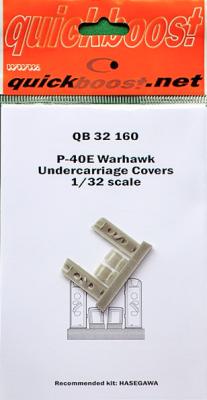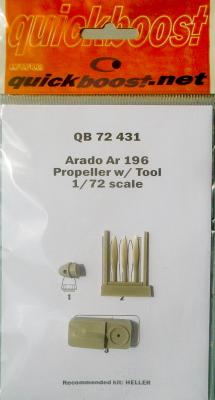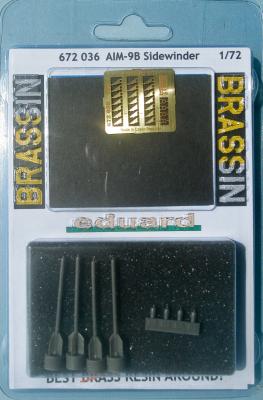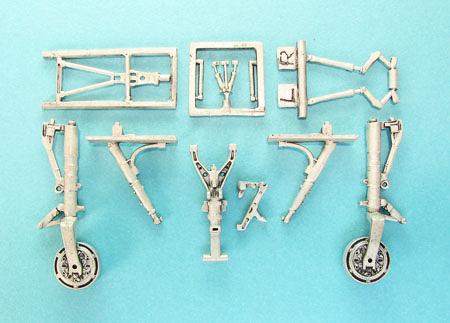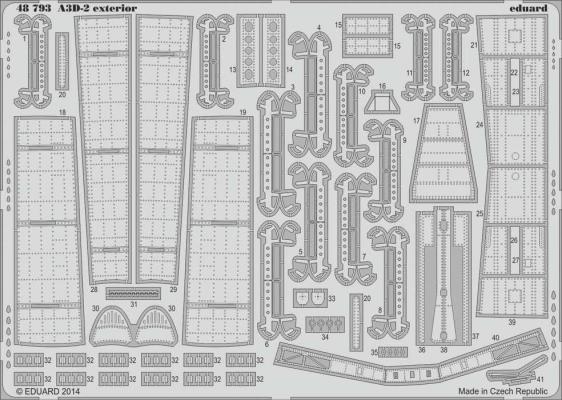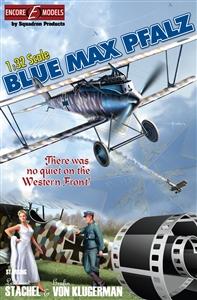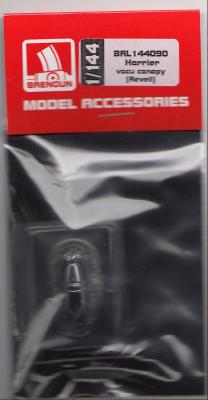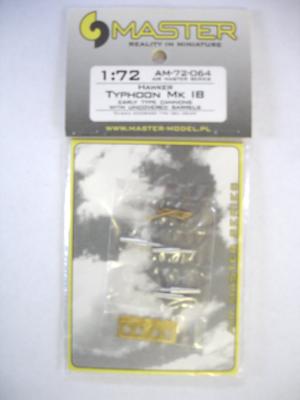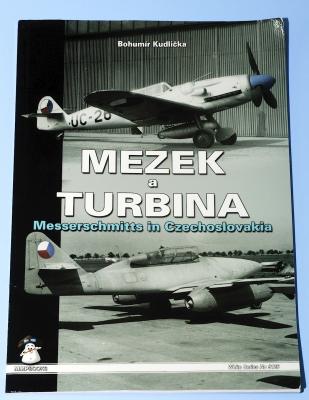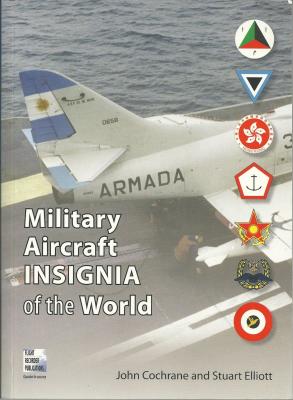Quickboost has recently added 1/32 scale undercarriage covers for the P-40E to their aftermarket parts line. They are specifically designed to replace those in the Hasegawa 1/32 scale kit. They are designed as drop in replacements for the kit parts. With some adjustment, they should work on the Revell kit as well. Detail is marginally better than the Hasegawa kit parts, but they offer one advantage: there are no seam lines or ejector pin marks for the modeler to eliminate.
What's New
Attached to the front of a BMW 132K nine-cylinder, 960-horsepower radial engine, the VDM propeller helped the Arado 196 to reach speeds of up to 193 mph at 13,120 feet. The seaplane was used for reconnaissance missions, and it was initially produced in 1937 as a prototype, with the first production planes being delivered in 1938. By the end of production in 1944, Germany and her allies had deployed over 540 of the aircraft during the Second World War.
First developed for the US Navy by Raytheon in the early 1950s, the AIM-9 (Air Intercept Missile) has been a mainstay for the United States and our allies for nearly 60 years. The AIM-9B represented in this offering from Eduard was the first production model of the Sidewinder, entering service in 1956. There have been several updates over the years, and the current model in use is the AIM-9X. Raytheon and General Electric produced approximately 80,900 of the B variant, and the model is credited with one Navy and 26 Air Force victories during Vietnam.
Scale Aircraft Conversions continues its line of white metal gear with a replacement set for the KittyHawk F-101 Voodoo. The Voodoo is a large, heavy plane, and this set will keep it upright.
The set is cast in SAC’s traditional white metal and consists of 13 parts with minimal to no seam lines. All the parts of the kit gear are replicated in white metal perfectly. For the main gear, the wheel hubs are integral to the strut, and this arrangement is replicated in SAC’s version. The interior bracing is also replicated and attached to the retraction strut.
The front gear is more complicated, consisting of six parts plus the retraction strut. The KittyHawk parts are very fine and the plastic is moderately soft. Thus, as you can see in the pictures, one part of the kit’s oleo was destroyed in removal. Not so with the excellent SAC parts. The front landing gear will certainly be sturdy when the SAC parts are installed.
Eduard’s A3D-2 Exterior Set, number 48793, address some of the shortcomings of the Trumpeter 1/48 scale A-3D kit with additions to the slats on the outer wing, the tail hook area, the crew door, and the speed brakes. There are also additions to the windshield wiper and the back of the engine pylons.
The speed brakes in the kit are nice; however, they lack surface detail, such as rivets and boxes. Eduard corrects this by adding five panels to the interior of the speed brake that have superb relief-etched rivets and lines. These panels require a couple of small bumps to be removed and then glued back into place. The speed brake housing gets a similar treatment with two parts each. One requires some bending, and the easiest way to start the bend is to use the kit’s plastic part as a form.
When Hollywood makes a movie that captures our modeling interests it usually is pretty exciting (or really frustrating). For those of us who focus on the air war of World War One, there have been some great movies, like The Dawn Patrol, some good movies, like Flyboys, and some not-so-good movies, like Von Richthofen and Brown. One movie that has become an icon of this genre is The Blue Max. This movie featured George Peppard as German pilot Bruno Stachel and Ursula Andress as the seductive Countess Kaeti von Klugermann. The other star in the movie was the Pfalz D.III. It is this important WWI fighter that has captured the imagination of modeling companies. Encore Models, produced by Squadron Products, first released their Blue Max Pfalz D.III in 1/72 scale in a bagged econo-kit, using the Roden molding and adding the unique lozenge decal characteristic of the plane in the movie.
Many of us have had the distinct displeasure of ruining a canopy. I once dropped one on the floor and stepped on it. There is also the great possibility of getting CA fumes on the inside or some other adhesive which will either melt, craze or deform the canopy into uselessness. And then there’s the one where you open a kit you bought at a swap meet to find no clear parts inside.
You can find replacement canopies for “large scale” kits, including 1/32, 1/48 or 1/72, but there have been almost no canopies in 1/144. Brengun seems to be taking a position in this market.
Master Model is a scale model metal detailing parts manufacturer located in Poland. Their lines include exquisitely detailed photo-etched and white metal replacement parts for aircraft and ships in the most commonly produced scales.
Master has produced replacement cannons of the early type, with uncovered barrels for any 1/72 Hawker Typhoon early Mk Ib kits. This item is intended to completely replace the plastic kit parts. My example kit (a Maquette issue from Russia) is a Mk Ib, and my research indicates it is the correct version that this particular part issue would be appropriate for. These cannons should generally be fitted to the earlier “car door” version of the Mk Ib as used early in WWII by the RAF. Later Mk. IB versions had full cover extensions over the cannon barrels.
Bohumir Kudlicka follows the transition of Czechoslovakian production of the Messerschmitt Bf 109G “Mezek” and the Messerschmitt Me 262 “Turbina” from underground facilities for the Luftwaffe to production by Avia for the Czechoslovakian Air Force. Mr. Kudlicka weaves an interesting tale of how and why the Czechoslovakian Air Force came to use the ‘hated’ German designed aircraft in lieu of English and Russian aircraft that their returning pilots had been flying during the war.
There are many unpublished photos that describe in detail the selection, modification and production of these two aircraft. The text and photos are complemented with color profiles, 3-D plan views, 1/48 scale plans, and period scrap illustrations.
The Table of Contents focuses on three major chapters:
Mezek – “Mule”
Military Aircraft insignia dates to pre-World War I era, with France and Romania as the first two countries to have designated official military markings.
This book covers every country that I can think of, including a handful of little know countries like Transinistra and some major countries that over the years had multiple military air force insignia (like the US or the Regia Aeronautica).
Each country has a section devoted to the markings, the colors in the insignia and a small description of their aerial assets. In most cases there is a picture of an airframe showing the insignia. Countries like Spain, that had multiple insignia and even civil wars, the book covers the markings of both sides.
All the markings are printed in full color and most of the pictures of the airplanes are in color too (the only exception are period pictures that were originally taken in black and white).

